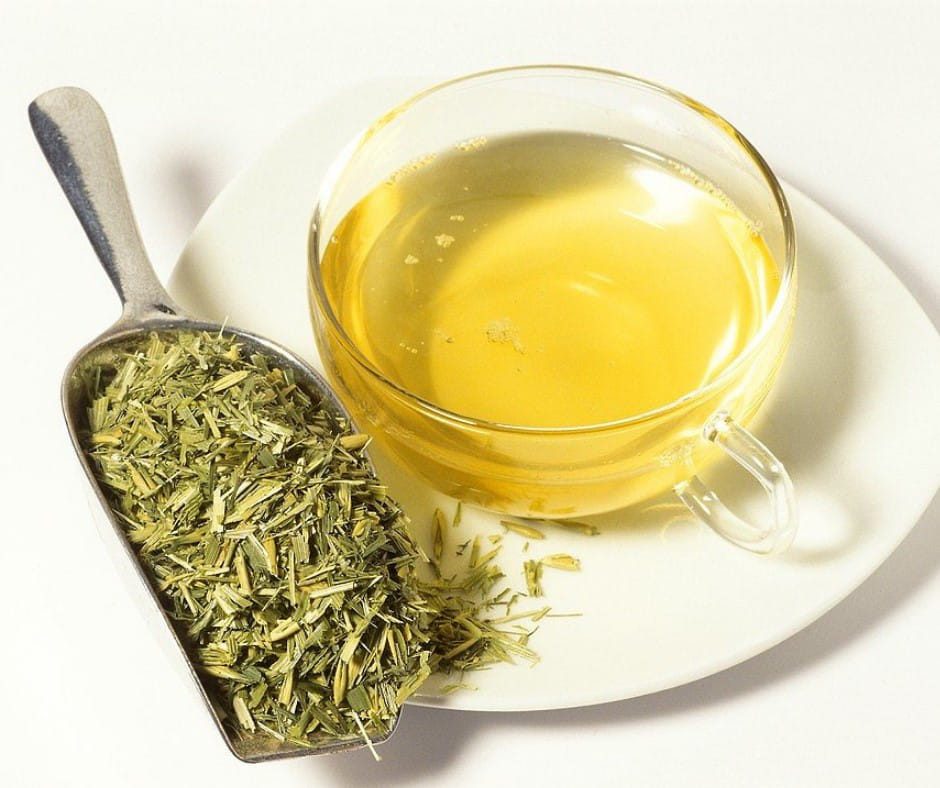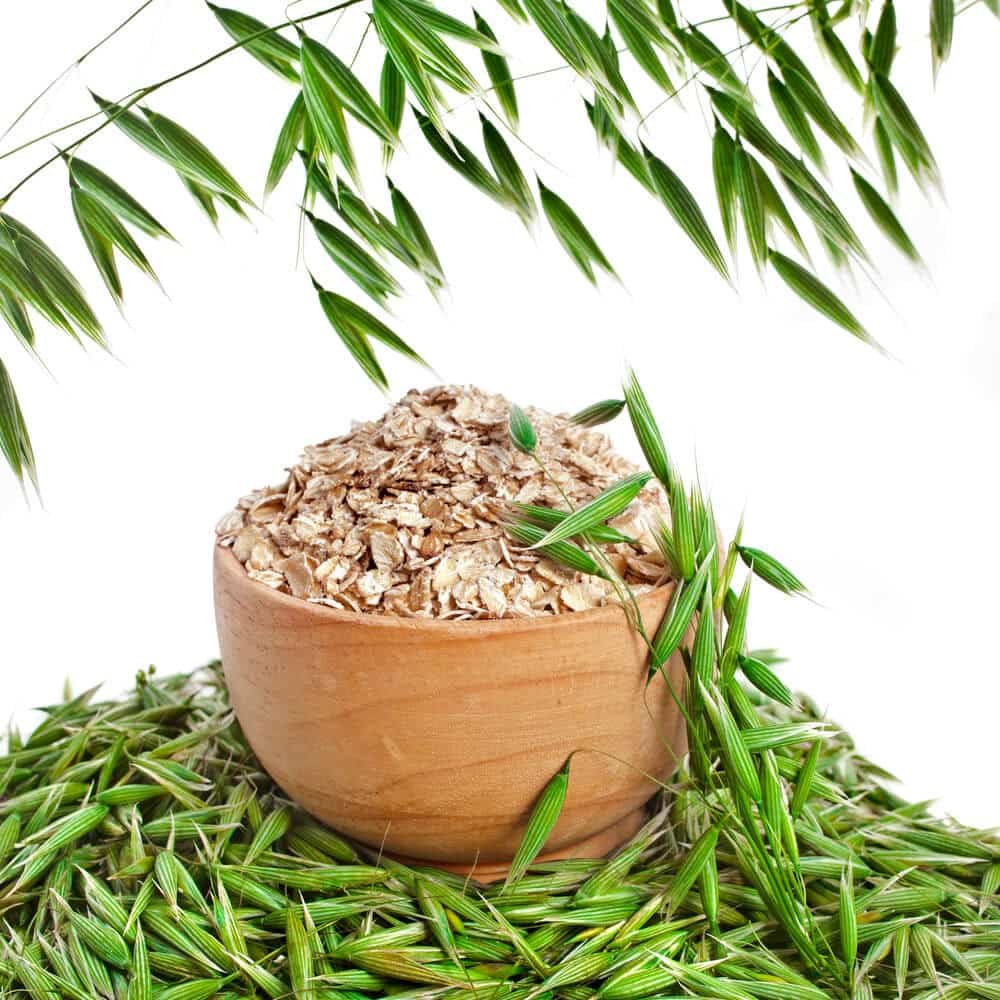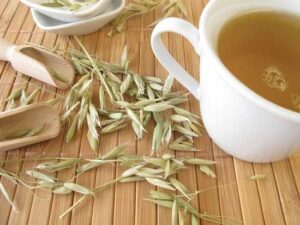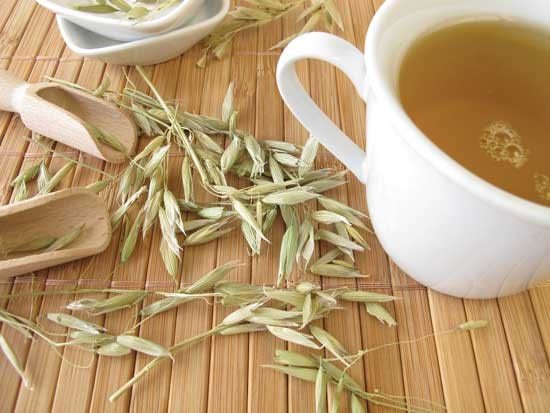Oat straw, tucked away in verdant fields where oats gently flow in the breeze, holds the key to millennia of life and well-being. Oatstraw has quietly fascinated herbalists and health enthusiasts alike with its rich nutritional profile and numerous medicinal properties, having emerged from the humble green tops of the oat plant (Avena sativa). Oatstraw tea is the centerpiece of this botanical treasure trove; it is a calming infusion that entices claims of soothed nerves, sharper minds, and strengthened bodies.
Oatstraw tea is a living example of the timeless wisdom of natural medicines, even amid the busy shelves of modern wellness. Its voyage spans time, from ancient civilizations to modern herbalism, leaving a comforting and revitalizing legacy in its wake. Take along with us into the lush world of oat straw, where science and tradition combine to provide a cup of calm and nourishment with each sip.
Oatstraw’s Origins and History
-
Origins of Oatstraw as a Herbal Remedy
Oatstraw has ancient roots and is made from the green tips of the oat plant (Avena sativa). In the past, ancient societies in Europe and Asia prized oat straw for its therapeutic qualities in addition to its use as a food source. Early Romans and Greeks were aware of its calming effects on the neurological system and employed it as a stress and anxiety reliever. Oatstraw was added to herbal formulas in traditional Chinese medicine to promote digestive health and as a general tonic for vigor.
-
Historical Uses and Cultural Significance
Oatstraw has remained an important part of many cultural customs and herbal remedies throughout history. It was frequently prepared into teas or infusions to encourage calmness and relaxation in medieval Europe. Renaissance herbalists praised it for strengthening the body against exhaustion and promoting mental clarity. Oatstraw was prized by Native American tribes for its capacity to fortify bones and joints, which helped to establish its well-known status as a sign of resiliency and health.
Oatstraw was highly valued in all cultures due to its healing properties as well as its symbolic significance. It was entwined with customs and mythology, frequently connected to blessings of wealth and health. Oatstraw’s lasting appeal and adaptability were secured by its versatility in both culinary and medical applications.
-
Evolution of Oatstraw into Modern Herbal Practices
Oatstraw went from being a traditional medicine to becoming a common herbalism as civilization advanced into the modern era and scientific understanding grew. A fresh interest in oat straw’s health advantages was sparked by the discovery of its rich nutritional profile, which is plentiful in vitamins, minerals, and bioactive substances. Its traditional uses, including fostering relaxation, bolstering cognitive function, and enhancing general well-being, were validated by scientific investigations.
Today, holistic health professionals and others looking for natural alternatives have embraced oat straw, placing it at the forefront of herbal wellbeing. Its incorporation into contemporary herbal methods offers a gentle yet efficient way to sustain health in modern lifestyles, reflecting a harmonic fusion of ancient wisdom and modern technology.
Health Benefits of Oatstraw Tea

-
Stress and Anxiety Relief
Oatstraw tea is well known for its calming effects on the mind and reduction of tension and anxiety. Oatstraw, which is high in bioactive substances including flavonoids and saponins, has a nervine tonic effect that helps to soothe the nervous system without making you feel drowsy. Oatstraw tea is a great ally in today’s fast-paced world because regular drinking may strengthen resilience to stressors, improve mood, and encourage relaxation.
-
Nervous System Support and Cognitive Enhancement
Oatstraw tea’s nutritional composition includes vital vitamins and minerals that support healthy nerve system activity and the best possible brain and cognitive function. Research indicates that the components of oat straw, such as calcium, magnesium, and B vitamins, enhance focus, mental acuity, and general cognitive well-being. Oatstraw tea is a natural choice for those looking to strengthen their cognitive abilities and aid in memory retention. It may also improve cognitive function when regularly consumed.
-
Bone and Joint Health
The mineral silica, which is necessary for the upkeep of healthy bones, joints, and connective tissues, is found in oat straw tea. The body produces collagen with the help of silica, which is essential for joint flexibility and bone density. You may improve mobility and general musculoskeletal health by adding oat straw tea to your daily routine. It can also help strengthen bones, lower the risk of osteoporosis, and ease joint stiffness.
-
Skin Health and Anti-Aging Properties
Oatstraw tea’s anti-aging and possible advantages for skin health are partly attributed to its antioxidant capabilities. Antioxidants aid in the fight against oxidative stress, which can cause skin damage and early aging. Frequent use of oat straw tea may improve the suppleness of the skin, minimize wrinkles, and encourage a more youthful complexion. Its anti-inflammatory qualities may also improve skin resilience against environmental stressors and relieve skin irritations.
-
Digestive Health Benefits
Oatstraw tea is a moderate digestive tonic that has been traditionally used to assist digestive function. It promotes gastrointestinal comfort and regularity. Oatstraw’s soluble fiber encourages regular bowel movements and lessens bloating, which supports healthy digestion. Furthermore, the mild effects of oat straw tea on the digestive system may help reduce indigestion symptoms and promote general gut health by creating a healthy environment in the digestive system.
-
Potential Role in Cardiovascular Health
Oatstraw tea contains soluble fibers called beta-glucans, which are known to decrease cholesterol, which may have a positive impact on the heart. Oatstraw tea promotes heart health and may help lessen the risk of cardiovascular diseases by assisting in the reduction of LDL (bad) cholesterol levels. Its anti-inflammatory qualities may also improve cardiovascular health and preserve normal blood vessel function, making it a heart-healthy supplement to your regular wellness routine.
Read Also: Can Menopause Tea Help with Symptoms
Incorporating Oatstraw Tea into Your Daily Routine

-
Recommended Dosage and Frequency
It is advised to drink one to three cups of oat straw tea per day to reap the full advantages. To test your body’s reaction, start with one cup and then progressively increase as needed. Adapt the dosage per individual tastes and health objectives, bearing in mind that moderation is essential to obtaining the best possible results without going overboard.
-
Best Times to Enjoy Oatstraw Tea
Oatstraw tea’s adaptability makes it possible to drink it at many times of the day, each with its advantages. If you want to encourage mental clarity and create a peaceful atmosphere for the day, try having a cup of oat straw tea first thing in the morning. As an alternative, sip a calming cup in the afternoon to help focus and reduce lunchtime tension. If you want to de-stress and be ready for a good night’s sleep, have a warm cup of oat straw tea in the evening.
-
Incorporating Oatstraw into Recipes Beyond Tea
In addition to being brewed traditionally, oat straw can be ingeniously added to a wide range of delicious dishes to improve their flavor and nutritional value. Try incorporating oat straw into your homemade energy bars or granola for a nutritious nutritional boost. Blend oat straws into drinks or smoothies to boost their nutritional value and give a hint of earthiness. To give your favorite foods a taste of herbal flavor, try infusing oat straw into homemade syrups or salad dressings for a refreshing twist.
Related Blogs:
Health Benefits of Drinking Hawthorn Berry Tea
How Passionflower Tea Can Improve Your Wellbeing
Conclusion
The mild green tips of the oat plant (Avena sativa), which are used to make oat straw tea, are a living example of the long-lasting effectiveness of natural medicines in fostering health and well-being. For millennia, the rich nutritional profile and adaptable therapeutic qualities of oat straw have enthralled herbalists and health enthusiasts alike. Oatstraw has traveled through history, from ancient civilizations to contemporary herbalism, leaving a comforting and revitalizing legacy.
As you investigate the possibilities of oat straw tea, keep in mind its history as a perennial ally in the quest for balance and energy. By sipping from each cup, you pay tribute to a long-standing custom of health and well-being that celebrates the balance between the pursuit of holistic wellness and the wonders of nature.
FAQ’s
How is oat straw tea manufactured, and what is its specific composition?
The dried green tops of the oat plant (Avena sativa) are used to make oat straw tea. Just soak one or two teaspoons of dry oats in hot water for ten to fifteen minutes to make oat straw tea. Enjoy the calming herbal infusion after straining. For further complexity, some people like to blend it with other herbs or flavorings.
What are the principal health advantages of oat straw tea consumption?
Numerous health advantages are associated with oat straw tea, such as lowered stress levels, nervous system support, increased cognitive function, better bone and joint health, potential anti-aging and skin health benefits, digestive support, and potential cardiovascular benefits. It is highly valued due to its abundant nutritional composition, containing vitamins, minerals, and antioxidants.
Is it possible to bake or cook using oat straw tea?
Indeed, oat straw can be inventively added to a variety of recipes other than those that include brewing tea. It increases nutritional content and imparts a subtle, herbal flavor. Incorporate oat straws into healthy recipes such as energy bars, smoothies, soups, and even baked goods like cookies or muffins. It’s a multipurpose ingredient that enhances flavor and adds health benefits to both savory and sweet meals.







